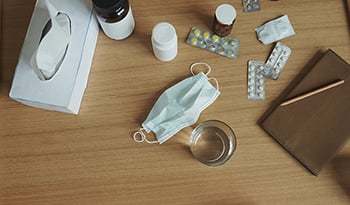DGL pentru sănătatea intestinului

Lemn dulce deglicirizinat (DGL): Un extract special de lemn dulce pentru ulcerul peptic (duodenal și gastric)
Un extract special de lemn dulce cunoscut sub numele de DGL este un medicament remarcabil pentru ulcerul peptic.* Termenul ulcer peptic se referă la ulcerele care apar în stomac (ulcer gastric) sau în prima porțiune a intestinului subțire (ulcer duodenal). Ulcerele duodenale sunt mai frecvente, cu o rată de frecvență estimată de 6 până la 12% din populația adultă din Statele Unite. Cu alte cuvinte, aproximativ 10% din populația SUA are dovezi clinice de ulcer duodenal la un moment dat în viața lor. Ulcerele duodenale sunt de 4 ori mai frecvente la bărbați decât la femei și de 4 până la 5 ori mai frecvente decât ulcerele gastrice.
Care sunt simptomele unui ulcer?
Deși simptomele unui ulcer peptic pot fi absente sau destul de vagi, majoritatea ulcerelor peptice sunt asociate cu disconfort abdominal observat la 45-60 de minute după mese sau în timpul nopții. În cazul tipic, durerea este descrisă ca roade, arsură, asemănătoare crampelor sau dureroasă sau ca „arsuri la stomac. Mâncarea sau utilizarea antiacidelor are ca rezultat, de obicei, o mare ușurare.
Ce cauzează un ulcer?
Chiar dacă ulcerele duodenale și gastrice apar în locații diferite, ele par a fi rezultatul unor mecanisme similare. Mai exact, dezvoltarea unui ulcer duodenal sau gastric este rezultatul unui factor care dăunează factorilor de protecție care acoperă stomacul și duodenul. În trecut, accentul a fost pus în primul rând pe secrețiile acide ale stomacului ca cauză principală a ulcerului gastric și duodenal. Cu toate acestea, mai recent accentul a fost pus pe bacteriile Helicobacter pylori și medicamentele antiinflamatoare nesteroidiene (AINS), cum ar fi aspirina și ibuprofenul.
Acidul gastric este extrem de coroziv. PH-ul acidului gastric (1 până la 3) ar mânca un ulcer chiar prin piele. Pentru a proteja împotriva ulcerelor, mucoasa stomacului și intestinului subțire are un strat de mucină. În plus, reînnoirea constantă a celulelor intestinale și secreția factorilor care neutralizează acidul atunci când vine în contact cu stomacul și mucoasele intestinale protejează, de asemenea, împotriva formării ulcerului. Acidul este conceput pentru a digera alimentele pe care le consumăm, nu stomacul sau intestinul subțire.
Contrar opiniei populare, supra-secreția producției de acid gastric este rareori un factor în ulcerul gastric. De fapt, pacienții cu ulcere gastrice tind să secrete niveluri normale sau chiar reduse de acid gastric. La pacienții cu ulcer duodenal, aproape jumătate au crescut producția de acid gastric. Această creștere se poate datora unui număr crescut de celule producătoare de acid cunoscute sub numele de celule parietale. Ca grup, pacienții cu ulcere duodenale au de două ori mai multe celule parietale în stomac comparativ cu persoanele fără ulcere.
Chiar și cu o creștere a producției de acid gastric, în circumstanțe normale, există suficienți factori de protecție pentru a preveni formarea ulcerului gastric sau duodenal. Cu toate acestea, atunci când integritatea acestor factori de protecție este afectată, se poate forma un ulcer. Pierderea integrității poate fi rezultatul H. pylori, aspirinei și altor medicamente antiinflamatoare nesteroidiene (AINS), fumatului, alcoolului, deficitului de nutrienți, stresului și multor alți factori.1-5
Care este cel mai bun medicament natural pentru ulcere?
Un extract special de lemn dulce cunoscut sub numele de DGL.* Licoarea a fost considerată istoric ca un medicament excelent pentru ulcerul peptic. Cu toate acestea, datorită efectelor secundare ale compusului de lemn dulce acid glicirethinic (provoacă creșteri ale tensiunii arteriale în unele cazuri), a fost dezvoltată o procedură pentru a elimina acest compus din lemn dulce și pentru a forma lemn dulce deglicirizinat (DGL). Rezultatul este un agent anti-ulcer de mare succes, fără efecte secundare cunoscute.*6-11
Cum funcționează DGL?
Mecanismul propus al DGL este acela că stimulează și/sau accelerează factorii de protecție care protejează împotriva formării ulcerului.* Acest mecanism de acțiune este mult diferit de antiacide și medicamente precum Tagamet, Zantac, Pepcid, Prevacid și Prilosec care acționează prin neutralizarea sau suprimarea acidului gastric. O întrebare evidentă legată de DGL este „DGL are vreun efect asupra Heliobacter pylori? ” Răspunsul pare a fi da, deoarece DGL este compus din mai multe flavonoide care s-au dovedit că
inhibă H. pylori.12*
Cum se compară DGL cu antiacide sau medicamente precum Tagamet și Zantac?
Numeroase studii de-a lungul anilor au descoperit că DGL este un compus eficient anti-ulcer.* În mai multe studii de comparație, DGL s-a dovedit a fi mai eficient decât Tagamet, Zantac sau antiacide atât în tratamentul pe termen scurt, cât și în terapia de întreținere a ulcerului peptic.7,8* Cu toate acestea, deși aceste medicamente sunt asociate cu efecte secundare semnificative, DGL este extrem de sigur și reprezintă doar o fracțiune din cost.
Ce au arătat cercetările cu DGL în ulcerele gastrice?
Rezultate foarte bune. De exemplu, într-un studiu privind DGL în ulcerul gastric, 33 de pacienți cu ulcer gastric au fost tratați fie cu DGL (760 mg, de trei ori pe zi), fie cu placebo timp de o lună.9 A existat o reducere semnificativ mai mare a dimensiunii ulcerului în grupul DGL (78%), decât în grupul placebo (34%). Vindecarea completă a avut loc la 44% dintre cei care au primit DGL, dar la doar 6% din grupul placebo. *
Studiile ulterioare au arătat că DGL este la fel de eficace ca Tagamet și Zantac atât pentru tratamentul pe termen scurt, cât și pentru terapia de întreținere a ulcerului gastric.* De exemplu, într-o comparație cap la cap cu Tagamet, o sută de pacienți au primit fie DGL (760 mg, de 3 ori pe zi între mese), fie Tagamet (200 mg, de 3 ori pe zi și 400 mg ulcere înainte de culcare) .7 Procentul de vindecare după 6 și 12 săptămâni a fost similar în ambele grupuri. Cu toate acestea, în timp ce Tagamet este asociat cu o anumită toxicitate, DGL este extrem de sigur de utilizat.
Ulcerele gastrice sunt adesea rezultatul consumului de alcool, aspirină sau alte medicamente antiinflamatoare nesteroidiene, cofeină și alți factori care scad integritatea mucoasei gastrice. Deoarece s-a demonstrat că DGL reduce sângerarea gastrică cauzată de aspirină, DGL este puternic indicat pentru prevenirea ulcerului gastric la pacienții care necesită tratament pe termen lung cu medicamente cauzatoare de ulcer, cum ar fi aspirina, alte AINS și corticosteroizi.10
Ce zici de DGL în ulcerele duodenale?
DGL este, de asemenea, eficient în ulcerele duodenale. Acest lucru este probabil cel mai bine ilustrat de un studiu efectuat la pacienții cu ulcere duodenale severe. În studiu, patruzeci de pacienți cu ulcere duodenale cronice de durată de 4 până la 12 ani și mai mult de 6 recidive în anul precedent au fost tratați cu DGL.11 Toți pacienții au fost trimiși pentru intervenție chirurgicală din cauza durerii neobosite, uneori cu vărsături frecvente, în ciuda tratamentului cu repaus la pat, antiacide și medicamente puternice. Jumătate dintre pacienți au primit 3 grame de DGL zilnic timp de 8 săptămâni; cealaltă jumătate a primit 4,5 grame pe zi timp de 16 săptămâni. Toți cei 40 de pacienți au prezentat îmbunătățiri substanțiale, de obicei în decurs de 5 până la 7 zile, și niciunul nu a necesitat intervenții chirurgicale în timpul urmăririi de un an. Deși ambele doze au fost eficiente, doza mai mare a fost semnificativ mai eficientă decât doza mai mică.
Într-un alt studiu mai recent, efectul terapeutic al DGL a fost comparat cu cel al antiacidelor sau cimetidinei la 874 de pacienți cu ulcere duodenale cronice confirmate.8 Nouăzeci și unu la sută din toate ulcerele s-au vindecat în decurs de 12 săptămâni; nu a existat nicio diferență semnificativă în rata de vindecare în grupuri. Cu toate acestea, au existat mai puține recăderi în grupul DGL (8,2%) decât la cei care au primit cimetidină (12,9%) sau antiacide (16,4%). Aceste rezultate, împreună cu efectele protectoare ale DGL, sugerează că DGL este un tratament superior al ulcerelor duodenale. *
Cum iau DGL?
Doza standard pentru DGL în cazurile acute este de două până la patru 400 mg.* comprimate masticabile între sau 20 de minute înainte de mese. Pentru cazuri cronice mai ușoare sau pentru întreținere, doza este de una până la două comprimate cu 20 de minute înainte de mese. Luarea DGL după mese este asociată cu rezultate slabe. Terapia cu DGL trebuie continuată timp de cel puțin 8 până la 16 săptămâni după ce există un răspuns terapeutic complet.
Se pare că, pentru a fi eficient în vindecarea ulcerelor peptice, DGL trebuie să se amestece cu saliva. DGL poate promova eliberarea compușilor salivari care stimulează creșterea și regenerarea celulelor stomacale și intestinale. DGL sub formă de capsule nu sa dovedit a fi eficientă.
Antiacidele par să-mi ajute simptomele, ar trebui să continui să le folosesc sau vor interfera cu eficacitatea DGL?
Antiacidele pot fi utilizate ca parte a tratamentului inițial pentru ameliorarea simptomatică. Toate antiacidele sunt relativ sigure atunci când sunt utilizate ocazional, dar recomand cu tărie evitarea antiacidelor care conțin aluminiu. Vă recomand să urmați instrucțiunile de pe etichetă și să evitați utilizarea regulată sau utilizarea excesivă a antiacidelor. Luate în mod regulat antiacide, acestea pot duce la malabsorbția nutrienților, nereguli intestinale, pietre la rinichi și alte efecte secundare.
Referințe:
- Berstad K și Berstad A: Infecția cu Helicobacter pylori în boala ulcerului peptic. Scand J Gasroenterol 28:561-7, 1993.
- Sarker SA și Gyr K: Mecanisme de apărare non-imunologice ale intestinului. Gut 33:987-93, 1992.
- Levenstein S: Ulcer peptic la sfârșitul secolului XX: factori de risc biologici și psihologici. Can J Gastroenterol 13:753-9, 1999.
- Weil J și colab.: Aspirină profilactică și risc de sângerare a ulcerului peptic. BMJ 310:827-30, 1995.
- Parasher G și Eastwood GL: Fumatul și ulcerul peptic în epoca Helicobacter pylori.EUR J Gastroenterol Hepatol 12:843-53, 2000.
- Marle, J, și colab.: Licorice deglicirizinizat (DGL) și reînnoirea epiteliului stomacului de șobolan. Eur J Pharm. 72:219, 1981.
- Morgan Ag și colab.: Comparație între cimetidină și Caved-S în tratamentul ulcerației gastrice și terapia de întreținere ulterioară. Gut
23:545-51, 1982. - Kassir ZA: Studiu controlat endoscopic al patru regimuri medicamentoase în tratamentul ulcerației duodenale cronice. Irish Med J 78:153-6, 1985.
- Turpie AG, Runcie J și Thomson TJ: Studiu clinic al lemnului dulce deglicirizinat în ulcerul gastric. Gut 10:299-303, 1969.
- Rees WDW și colab.: Efectul lemnului dulce deglicirizinat asupra afectării mucoasei gastrice de către aspirină. Scand J Gastroent 14:605-7, 1979.
- Tewari SN și Wilson AK: Licorice deglicirizinat în ulcerul duodenal. Practicant 210:820-5, 1972.
- Beil W, Birkholz și Sewing KF: Efectele flavonoidelor asupra secreției de acid celular parietal, producției de prostaglandine ale mucoasei gastrice și creșterii Helicobacter pylori. Arzneim Forsch 45:697-700, 1995.
Declarație de declinare a responsabilității:Acest blog nu are ca scop să ofere un diagnostic.









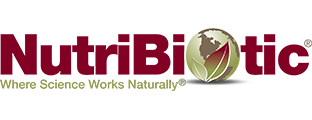










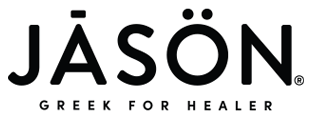

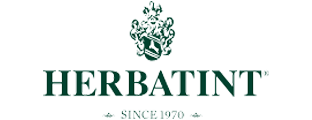




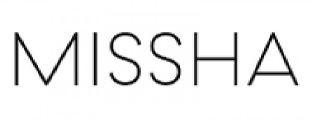

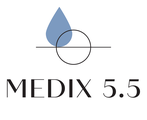
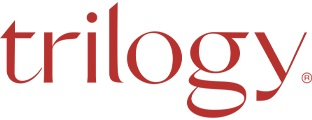



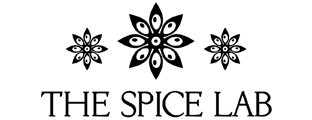


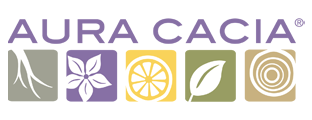















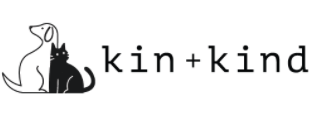
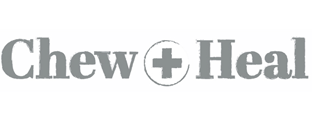

























 Cuprins
Cuprins







